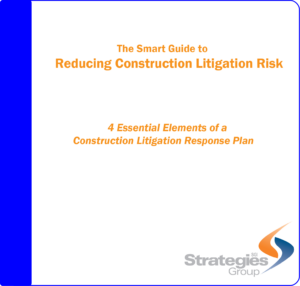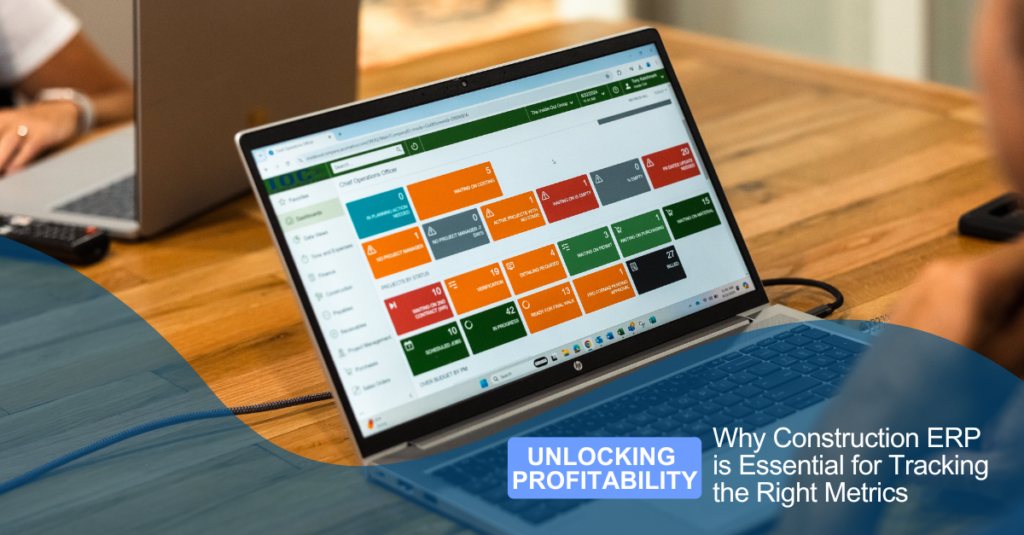 The threat of litigation is a concern that hangs over all construction contractors like a black cloud. Multi-million dollar lawsuits are commonplace in the construction industry and can quickly bankrupt even the most prestigious construction firm. A recent Construction Executive Risk Management article places the percentage of large companies spending more than $1 million dollars on litigation at 71% in 2013, up from 53% the year before. Rather than ignoring the eventuality of litigation, some advance preparation can help prevent litigation costs from spiraling out of control. Similar to an Emergency Response Plan, contractors should consider creating a Construction Litigation Response Plan to prepare for those costs incurred during the inevitable project litigation.
The threat of litigation is a concern that hangs over all construction contractors like a black cloud. Multi-million dollar lawsuits are commonplace in the construction industry and can quickly bankrupt even the most prestigious construction firm. A recent Construction Executive Risk Management article places the percentage of large companies spending more than $1 million dollars on litigation at 71% in 2013, up from 53% the year before. Rather than ignoring the eventuality of litigation, some advance preparation can help prevent litigation costs from spiraling out of control. Similar to an Emergency Response Plan, contractors should consider creating a Construction Litigation Response Plan to prepare for those costs incurred during the inevitable project litigation.
Why You Need a Construction Litigation Response Plan
When a complaint is filed against a contractor, advanced planning can defray many costs that can arise from having to move quickly and without enough time to find cost-effective solutions to technical and legal problems. Much the same way insurance protects assets against unforeseen losses, a litigation mitigation budget can help protect against unforeseen costs that can throw a balance sheet into the red. Let’s look at what to include in a Construction Litigation Response Plan and mitigation budget to help reduce expenses.
Streamlining Human Resource Costs
As soon as litigation is anticipated, costs begin to accrue as employees try to plan a response and course of action, which can be quickly decided upon if the company has an established Litigation Response Plan. Contractors with protocols in place speed up response time and reduce HR costs.
Your Litigation Response Plan should document the appropriate legal counsel for certain types of litigation, such as contract disputes, change orders or defects. To ensure that your company does not negotiate rates while in a time-sensitive position, pricing should already be established with essential service providers and documented in your company’s Litigation Response Plan
Curtailing Uncertainty Costs
Just as a contractor structures bids using the most accurate information available, an e-discovery vendor or legal service provider will attempt to do the same. Your greatest leverage in negotiating service pricing will depend on your ability to identify your company’s potential exposure on both a liability and service expense level.
For instance, the more information your company has regarding how many people may be involved with (or subject to) discovery in a given matter, how much data must be culled, or how many places must be searched for relevant evidence, the faster you’re able to ascertain an estimate to put your company in the best position to negotiate service pricing. A Litigation Response Plan that provides the quickest route to determine these facts can help reduce the assessment of uncertainty costs.
Identification & Collection Cost Reduction
Your Construction Litigation Response Plan should also incorporate a method for determining the relevant people in control of evidence (custodians) based upon scope of the matter as determined by counsel. Each matter may be different, but all will share the common requirement to determine the responsible parties. The responsibility of parties will be related to the expected duties of the employee based upon position, as well as the employee’s actual duties as determined by the self-disclosure of their actions or contents of their files and correspondence.
Discovery costs can be vastly reduced by setting up centrally managed data repositories and establishing protocols for saving potentially relevant information. It is always considerably more expensive to gather disorganized data than to collect information from a central location, particularly if it only stores one copy of the evidence. Invest in software to enable the rapid retrieval of evidence to help dramatically reduce litigation expenses and response time, and show ready compliance in the eyes of a court.
Production Cost Management
To avoid receiving data in an unusable format, include data delivery standards in your company’s Litigation Response Plan. The party that takes the initiative in establishing the production format for electronic evidence (e.g., single-page images, a metadata load file, an image load file, and associated text files for searching) can often set the tone for an orderly and efficient exchange of evidence.
Such production costs as printing or making copies are based on volume and complexity of the task requested. The more orderly and attainable the planned specifications are, the lower the costs and smoother the process. A modest investment in planning and software can avoid a lot of added pain in an already unpleasant situation.
Technology’s Role in Litigation Management
Standard operating procedures and centralized documentation are key elements in creating a Litigation Response Plan and mitigating litigation costs. Fortunately, new technologies and software specifically designed for the discovery process in construction have emerged to make locating and culling through evidence faster and easier. Until recently, contractors were limited to online file sharing and FTP sites for centralized storage and distribution of their project documents. Those with access to these types of sites, including subcontractors and vendors, could view and edit documents, but couldn’t track project activities or communication. Information in the form of plans and specifications could be uploaded to the site, but versioned documents and audit trails simply did not exist.
Recent advancements in technology have enabled the development of construction-specific documentation software that gives all project participants access to centralized information. These applications provide GCs, subcontractors, vendors, and potentially even legal counsel the ability to access all necessary files and evidence from one location. Terabytes of plans and specifications are not only easily stored, but supporting documentation in the forms of e-mails, RFIs, submittals, and project logs also provide the ability to recreate an entire project or a specific phase at any given time – whether during construction or years after construction is completed.
Proactive Risk Management
Litigation is inevitable. While legal fees, discovery costs, and other direct costs cannot be avoided, the indirect ones can be mitigated with the right steps. Responding to litigation requests, finding relevant materials, and culling through documents can tie up employee resources. Savvy contractors that take a proactive approach to their legal plans mitigate their risks and financial liabilities.
With a sound Construction Litigation Response Plan and appropriate technology in place, significant cost savings can be achieved. Regardless of the outcome of the litigation, contractors that carefully plan can significantly reduce the impact of indirect litigation costs and help focus their efforts on building their businesses.






